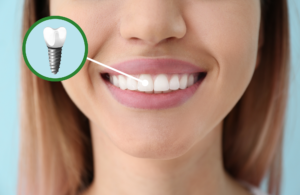Lip Injections San Diego can produce a natural-looking pout that enhances the contours of your face. However, you should have realistic expectations. You will be disappointed if you expect to walk out of a clinic with Kylie Jenner’s lips.
Before your appointment, it’s important to stop taking any medications that thin the blood (such as fish oil, painkillers, and vitamin E). This will reduce bruising and swelling after the procedure.

Achieving a natural look with lip fillers requires a professional with experience and an aesthetic eye. Lip enhancement should enhance your appearance, not look obviously “done.” You want a naturally enhanced pout that makes you feel confident and raises your self-esteem. The best way to get the results you desire is to visit a double board-certified facial plastic surgeon or physician specialist that has a solid background in all areas of face and neck rejuvenation and enhancement.
For lip filler treatments that look completely natural, consider the hyaluronic acid dermal fillers Juvederm Volbella or Restylane Kysse. These long-lasting injectable gels work like your body’s naturally occurring hyaluronic acid to plump and augment your lips while smoothing lines and wrinkles around the mouth. These specialized products are also very flexible and move with your lips to ensure that they don’t become too stiff or unnatural.
Your treatment will begin with a consultation to map out the area where you would like to add filler and discuss your desired outcome. Then, your professional will clean and sanitize the injection area and apply a numbing ointment. Injections only take a few seconds and are relatively painless.
You should avoid blood thinners such as aspirin, ibuprofen, fish oil, and vitamin E for a few days prior to your appointment to decrease the risk of bruising. You should also avoid alcohol and cold sore preventative medications such as Advil or Motrin. It is important to disclose all medications that you are taking to your medical professional.
When you get lip injections, the filler helps to soften lines and wrinkles around your mouth. This includes fine lines and wrinkles caused by smoking, natural aging, or just from laughing too hard. Injections also help to tighten the skin around the mouth, which can improve your overall facial appearance and make you look younger.
If you want to reduce the appearance of wrinkles in your upper lip area, a doctor may recommend using a softer dermal filler such as Restylane, Juvederm, or Belotero. These fillers can be given gradually over several sessions to produce a more natural result. These fillers are very popular because they are non-surgical, minimally invasive, and long-lasting.
You can also use anti-wrinkle injectables such as Botox and Dysport to smooth vertical lines in your lips. These injections work by weakening your lips’ muscles to create a more subtle effect. However, they can be painful and require downtime of up to a week.
The best option for lip augmentation is to use dermal fillers containing hyaluronic acid. These are injected into the lips and other areas to add volume, even out asymmetries, or create a particular shape or fullness. These fillers are also safe and non-toxic. They work by binding water molecules to create a plumper appearance and stimulate the production of collagen and elastin, so they will last longer than other treatments.
To prepare for your lip filler treatment, you should avoid taking any drugs that thin the blood, including aspirin and ibuprofen. It’s also a good idea to avoid caffeine and alcoholic beverages for 10 days before your appointment. Some patients experience swelling, bruising, or redness after lip filler treatment. Applying a darker shade of lipstick or taking arnica supplements can help minimize the appearance of bruises for the first few days after your treatment.
Lip injections, when performed by an experienced esthetician, are a non-surgical procedure that can add volume and create a more prominent pout. The results look natural and enhance your facial features. In addition, they are less invasive than lip implants and require no recovery time. Injections are also a great option for people who were born with thin lips. They can help them achieve a more prominent appearance that boosts their self-esteem.
Aesthetically pleasing lips are essential to a beautiful face, and they are considered one of the most feminine facial features. Having the right amount of fullness and symmetry in the lips can enhance other facial features, including skin texture and cheek volume. Ideally, the upper and lower lips should be about two-thirds as full as each other to maintain a natural proportion. Fortunately, dermal fillers like Juvederm and Restylane are ideal for adding or restoring volume to the lips. Injections can also correct creases and fine lines that develop around the mouth.
When choosing an injector, you should be able to discuss your goals and expectations for your treatment. Then, your doctor will recommend the best type of filler for your unique anatomy and desired aesthetic outcomes. It’s important to bring in reference photos of the kind of result you want so your physician can better understand your expectations.
A good injection expert will use a light hand when administering fillers and will avoid over-inflating the lips. He or she will apply numbing cream before the injections and will use a precise technique to inject small amounts of filler at each location. Bruising may last a few days after the treatment, but icing the lips and sleeping with your head elevated on two pillows will help decrease swelling.
Lip fillers are not permanent; they’re metabolized over time. However, with repeated treatments over the course of a few months, they can produce semi-permanent results. A dermatologist can guide you on the best dermal filler for your goals. Depending on your skin type, dermal fillers like Restylane Silk and Juvederm Volbella are a good choice for creating a subtle effect, while Juvederm Ultra or Ultra Plus can create more dramatic, pouty lips.
Lip injections are a medical treatment and should only be performed by a qualified healthcare professional, such as a plastic surgeon or dermatologist. Attempting to get this procedure done in an unlicensed spa or beauty salon can lead to serious complications such as thinning of the lips, the lips stretching out permanently, infection, and permanent scarring of the skin.
It is also important to have realistic expectations about the results of lip injections. They can help you achieve the look that you want, but they won’t give you Kylie Jenner’s lips. If you’re thinking of getting lip fillers to improve your smile, contact us for a consultation with our board-certified dermatologist.
Prior to your appointment, it is recommended that you avoid drinking alcohol or taking any medication that can thin the blood. It is also a good idea to take acetaminophen (such as Tylenol(r)) to reduce any pain or swelling that may occur after the injection. It’s also important to arrive with a clean face because your doctor will need to sanitize the injection sites before giving you the injection. After the procedure, you will need to allow time for bruising to subside. Most patients find that the bruising fades within a few days.
Lip fillers are much less invasive than lip implants, which involve surgically inserting a silicone strip into your lips. As a result, the results of lip fillers are more natural-looking and require minimal recovery time. Lip fillers also do not have the same risks that come with lip implants, such as asymmetry or bruising. Additionally, lip fillers have the advantage of being reversible if you are not happy with your results.
During a lip injection procedure, a dermal filler is introduced into the skin through non-surgical, minimally invasive injections. The type of dermal filler used will vary depending on your aesthetic goals.uses Restylane and Juvederm in her cosmetic treatments, which offer a wide range of options for lip enhancement. These products are injected very superficially into the skin, and they contain hyaluronic acid, which promotes collagen production. This helps to reduce the appearance of fine lines and wrinkles around the mouth, making the lips look more youthful.
In addition to enhancing the shape of your lips, lip fillers can help to eliminate wrinkles and fine lines that develop in the mouth area due to smoking and natural aging. They can also make your lips appear more full, which tightens the skin in the surrounding area and makes your lips look more youthful. This is an ideal option for smokers, who often develop severe wrinkles and lines around the mouth.
Lip fillers are very popular among women who wish to enhance their appearance by restoring their natural, fuller lips or redefining their lip shape. However, it is important to consult with an experienced injector in order to avoid complications and achieve a naturally-looking cosmetic result.



